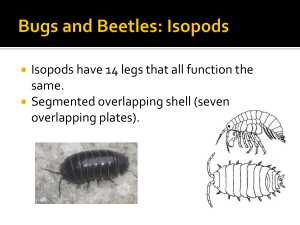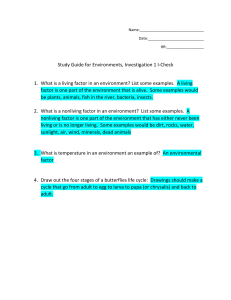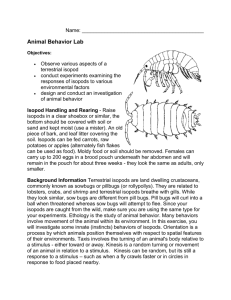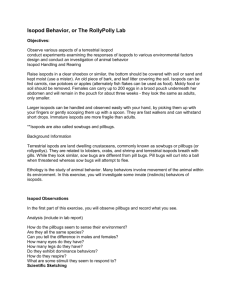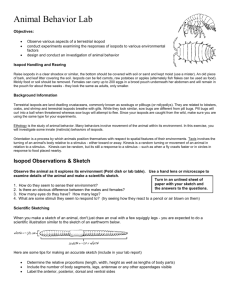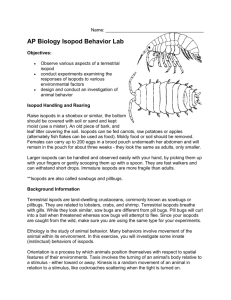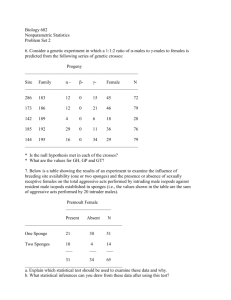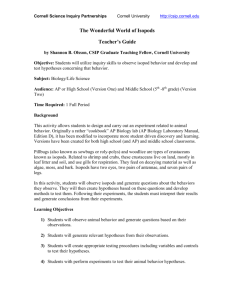Substrate and moisture preferences of terrestrial isopods
advertisement
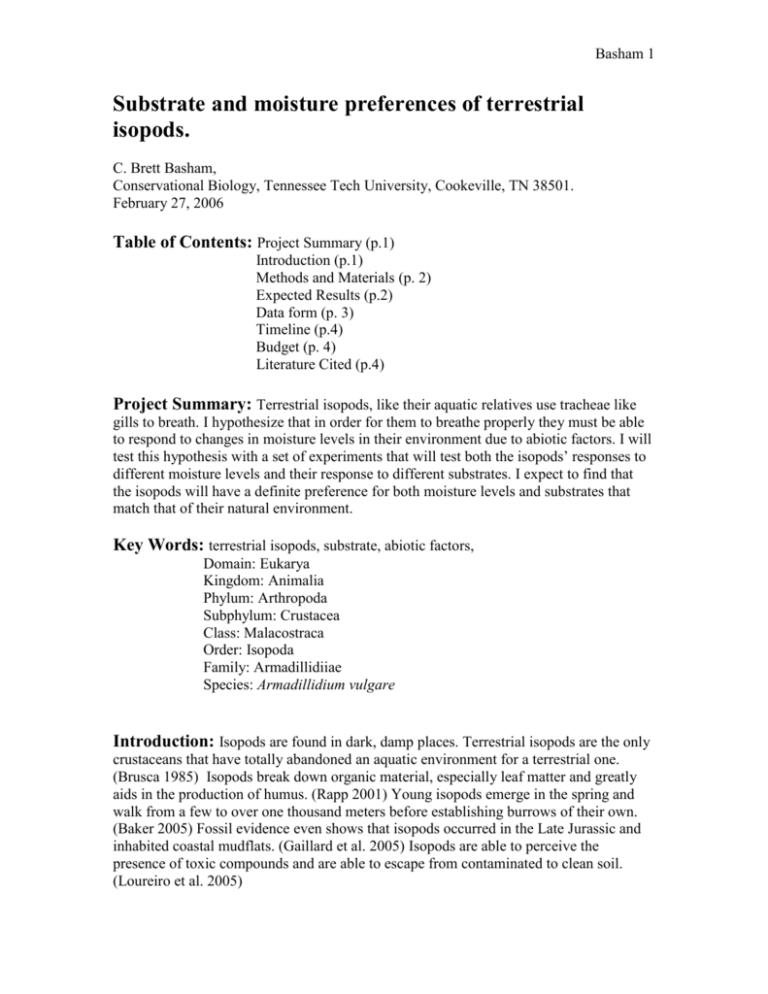
Basham 1 Substrate and moisture preferences of terrestrial isopods. C. Brett Basham, Conservational Biology, Tennessee Tech University, Cookeville, TN 38501. February 27, 2006 Table of Contents: Project Summary (p.1) Introduction (p.1) Methods and Materials (p. 2) Expected Results (p.2) Data form (p. 3) Timeline (p.4) Budget (p. 4) Literature Cited (p.4) Project Summary: Terrestrial isopods, like their aquatic relatives use tracheae like gills to breath. I hypothesize that in order for them to breathe properly they must be able to respond to changes in moisture levels in their environment due to abiotic factors. I will test this hypothesis with a set of experiments that will test both the isopods’ responses to different moisture levels and their response to different substrates. I expect to find that the isopods will have a definite preference for both moisture levels and substrates that match that of their natural environment. Key Words: terrestrial isopods, substrate, abiotic factors, Domain: Eukarya Kingdom: Animalia Phylum: Arthropoda Subphylum: Crustacea Class: Malacostraca Order: Isopoda Family: Armadillidiiae Species: Armadillidium vulgare Introduction: Isopods are found in dark, damp places. Terrestrial isopods are the only crustaceans that have totally abandoned an aquatic environment for a terrestrial one. (Brusca 1985) Isopods break down organic material, especially leaf matter and greatly aids in the production of humus. (Rapp 2001) Young isopods emerge in the spring and walk from a few to over one thousand meters before establishing burrows of their own. (Baker 2005) Fossil evidence even shows that isopods occurred in the Late Jurassic and inhabited coastal mudflats. (Gaillard et al. 2005) Isopods are able to perceive the presence of toxic compounds and are able to escape from contaminated to clean soil. (Loureiro et al. 2005) Basham 2 Methods and Materials: There will be two separate experiments. The first experiment will test how the isopods respond to different moisture levels on a simple, artificial substrate. This will be done by placing two halves of filter paper with different moisture levels in a Petri dish and counting the number of isopods on each side after a time. The second will test how they respond to the preferred moisture level of the first experiment on different natural substrates. This will be done by placing two different substrates in a Petri dish and counting the number of isopods on each side after a certain time period. I will analyze the data from each experiment using the G-test, and then by using a chi squared table to determine if my findings are significant. Materials: - Petri dishes - filter paper - dark soil - red clay - sand - water Expected Results: OBSERVATION Isopods live in dark, damp areas and must have moisture to survive. PROBLEM Will isopods show a preference to different moisture levels and certain substrates? HYPOTHESIS Yes, isopods will show preference to moisture levels and substrates that resemble their nature environment. NULL HYPOTHESIS The isopods will show no preference for moisture levels or substrate. EXPERIMENT/METHODS The independent variable in my experiment is different moisture levels. The dependant variable in the experiment is the isopods. The controlled variable is dry substrate. ANTICIPATED RESULTS I predict my hypothesis will be correct and that the isopods will be able to react to moisture levels and show a preference. Expected Results and Experiments: For both experiments the isopods will show a preference. For the first experiment I predict they will prefer the moist substrate. For the second experiment I predict that they will have a preference for the dark soil. Basham 3 Data form: Substrate and moisture preferences of terrestrial isopods. Location: __________________________________________________ (Facility name) (City) (County) (State) Sample Taken by: ___________________________________________________________ (Name) (Position) (Organization) Preferred Rejected Showed No Preference Dry Moist Drenched Dark soil Red clay Sand Remarks: ______________________________________________________ ______________________________________________________ Signature: _________________________ Date:__________ Basham 4 Time line: M an us cr ip t re se ar ch er Po w rit iq ue C bj /H O po in t 18 16 14 12 10 8 6 4 2 0 yp Weeks Timeline Budget: Salary- $500 Nonexpendable-$100 Expendable-$150 Indirect Costs-$75 Travel-$175 Literature Cited: Baker, M. 2005. Experience influences settling behaviour in desert isopods, Hemilepistus reaumuri. Animal Behavior 69: 1131-1138 Brusca, R. 1985. The biology of terrestrial isopods. Science 230: 659 Gaillard, C., P. Hantzpergue, J. Vannier, A. Margerard, J. Mazin. 2005. Isopod trackways from the Crayssac Lagerstatte, Upper Jurassic, France. Palaeontology 48: 947-962 Loureiro, S., A. Soares, A. Nogueira. 2005. Terrestrial avoidance behavior tests as screening tool to assess soil contamination. Environmental Pollution 138: 121-131 Rapp, W. 2001.The terrestrial isopods of Nebraska. Transactions of the Nebraska Academy of Sciences 27: 9
